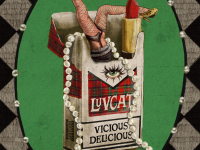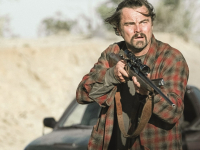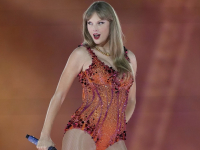Lady Mary’s scandalous public divorce and Harold Levinson’s not so secret financial trouble form the veritable backbone to Downton Abbey’s last hurrah!
Originally created and written almost twenty years ago by Julian Fellowes, whose previous works also included The Young Victoria and Gosford Park, now Downton Abbey sees the highs and indeed lows of the fictional life not only within the upper class of the Crawley family but also with their many below stairs servants as they weave their way through the various perilous backdrops of World War 1, Spanish Flu and the sinking of the Titanic in 1912. Set in Yorkshire, Downton Abbey itself is based on and set in the very real Highclere Castle, built in 1679 forming the glorious internal and external backdrops to the many series and films we have come to know and love since it first aired in 2010.
Inspired by various events in his life including overhearing as a child an argument between a Lord and servant but perhaps more importantly from a book written by Gail MacColl and Carol Wallace, To Marry an English Lord, which was first published in 1989. Fellows took the idea of the century old inheritance rules with one’s estate only legally passing to a parents’ male heirs, and also how the aristocracy at the time was changing and indeed crumbling without the required crucial ‘American money’ being brought to our shores through marriage.
Once again we are anointed with a vast cast who, on the whole, have grown into their roles perfectly whether they may be upstairs or indeed, downstairs. Starring from top to bottom so to speak, we have Hugh Bonneville and Elizabeth McGovern as Lord and Lady Grantham, the overseers of their huge estate, with Michelle Dockery and Laura Carmichael as the only surviving formidable daughters Lady Mary Talbot, and Lady Edith Pelham, after their brother tragically died on the apparently unsinkable ship. And this final film’s focus is Lady Mary as she finds herself socially cast aside off the back of a divorce which has left the whole family a little shell shocked. Also truly launching Lily James’ career who was brought in in series 3, she went on to star in Kenneth Brannagh’s wonderful, tightly scripted Cinderella. As with the nobles above, so we have the servants below. With Jim Carter and Phyllis Logan as Mr Carson and Mrs Hughes, the veritable heads of their comparatively cramped, yet busy domain. Also with many other great actors as the lords and lady’s butlers and of course maids; each with their own inimitable storyline, rising and falling throughout the changing bygone era.
Only now can we concentrate on the third and final instalment, Downton Abbey: The Grand Finale. It is 1930 and Lady Mary Talbot’s divorce with its social stigma has emerged at the worst possible time. Alongside this we have Lady Grantham’s now financially destitute ‘Yank’ brother Harold Levinson played by the marvellous Paul Giamati, who surviving the Wall Street Crash has been duped out of his fortune by the smoothe talking financial swindler Gus Sambrook played by Alessandro Nivola. And not forgetting a joyous turn by Arty Froushan who plays a marvellous Noël Coward, as he brings a certain je ne sais quoi to the whole proceeding stealing wonderful ideas along the way for his own ‘Private Lives’.
Over the three films – which have so far grossed approaching $400million – Fellowes has either nailed it or missed the point as to why Downton Abbey has been so loved by the hoi polloi. If one is coming in late but wishes to start, Downton Abbey: A New Era, (the second film) would be an excellent place if all six series are a little too much. Filmed in lockdown, it concentrates on the outcome of a previous affair Lady Violet Crawley (Maggie Smith) had in ‘another much younger life’ and so inheriting the most beautiful grand villa located on the Provence coast under the bright turquoise South of France skies.
Downton Abbey in its cinematic guise is best served to those who are familiar with its own wonderfully styled, grandiose backdrop. A huge cast who have in the main stayed loyal to the ship. A premise that has been viewed over the years by hundreds of millions throughout the globe from the USA to Japan and with huge adoration each time of how the rest of the world views our own uniquely albeit now mostly historic aristocracy. And here’s why. The attention to detail of not only the glorious and original ‘of the era’ costumes – which were sourced from Paris and further afield – but also with the professionally coached mannerisms and dialects of the time of both the aristocracy and lower working classes which make Downton so utterly believable. This is not an acting masterclass on the whole, but the actors have well and truly found their own groove in which to play their own individual character, albeit some better than others.
It may or may not be some time before we are dished up such visual grandeur again in this inimitable British style which neither adds to nor takes away from our glorious non too distant heritage. And so we doff our top hats to a time of open fireplaces in every grand bedroom, and silver service for breakfast. With the actors believing the second and previous film would be their last, they each said their heartfelt teary goodbyes, only to return once more and still be greatly received by the cinematic masses. Fear not however, as there are unconfirmed talks of a prequel based around a young Lady Violet Crawley and possibly her affair which lead to the aforementioned villa towards the end of the 19th century.
Escapism at its very best, Downton Abbey is not meant to be viewed as historical fact but more of a warm hug sitting around a large, roaring open fireplace. It has however come to pass to leave the Crawley family’s tales – of both large screen and small – though possibly only for the moment, with so many stories around the hearth still left to tell. Let us hark back even further to days of previous past, and look forward to the heyday of the late nineteenth century as we revel in the lavish parties of a young, oh so colourful, Violet.
Author: Piers, Maidstone Store







